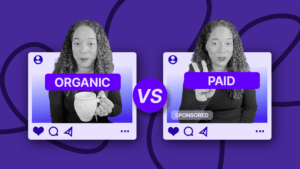42 Surprising UGC Statistics You Can’t Afford to Ignore
Passionate content and search marketer aiming to bring great products front and center. When not hunched over my keyboard, you will find me in a city running a race, cycling or simply enjoying my life with a book in hand.
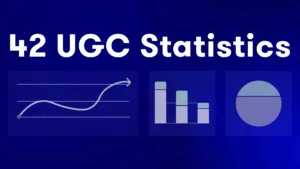
As the (digital) world becomes increasingly crowded, distinguishing your brand hinges on authenticity and engagement—two areas where UGC excels.
This list of statistics not only highlights UGC’s undeniable impact on consumer trust and purchasing decisions but also underscores its cost-effectiveness and versatility as a marketing tool.
From the significant sway of UGC on Gen Z and Millennials’ buying behavior to its remarkable ability to boost conversion rates and enhance SEO, these stats offer a clear roadmap for brands aiming to leverage the authentic power of UGC.
Whether you’re reassessing your content strategy or seeking to understand the latest digital trends, this will provide a critical perspective on why incorporating UGC is not just beneficial but essential for modern marketing success.
1. 93% of marketers who use UGC in marketing campaigns, say that it performs significantly better than traditional branded content [1]
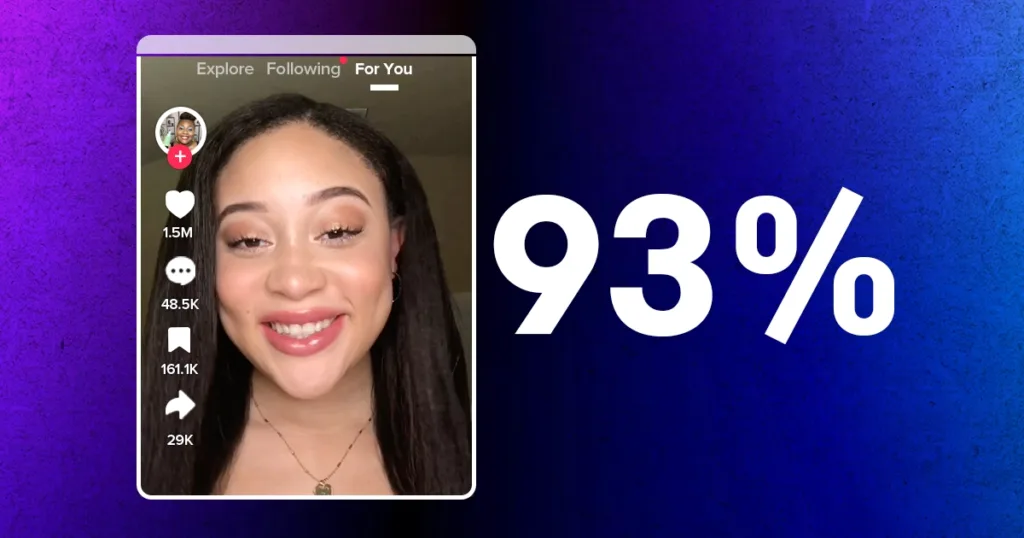
This statistic highlights a significant shift in marketing strategies, as brands move towards leveraging content that, while different in origin, consistently resonates with audiences.
UGC’s effectiveness lies in its ability to embody the genuine experiences and creative expressions of users, whether spontaneously shared or part of a broader brand engagement.
Its authenticity and relatability cut through the noise of traditional advertising, offering a more trustworthy and engaging connection with consumers. This trend underscores the evolving landscape of digital marketing, where authenticity and peer influence significantly impact consumer engagement and decision-making processes.
2. UGC influences the purchase choices of 70% of Gen Z and 78% of Millennials [2]
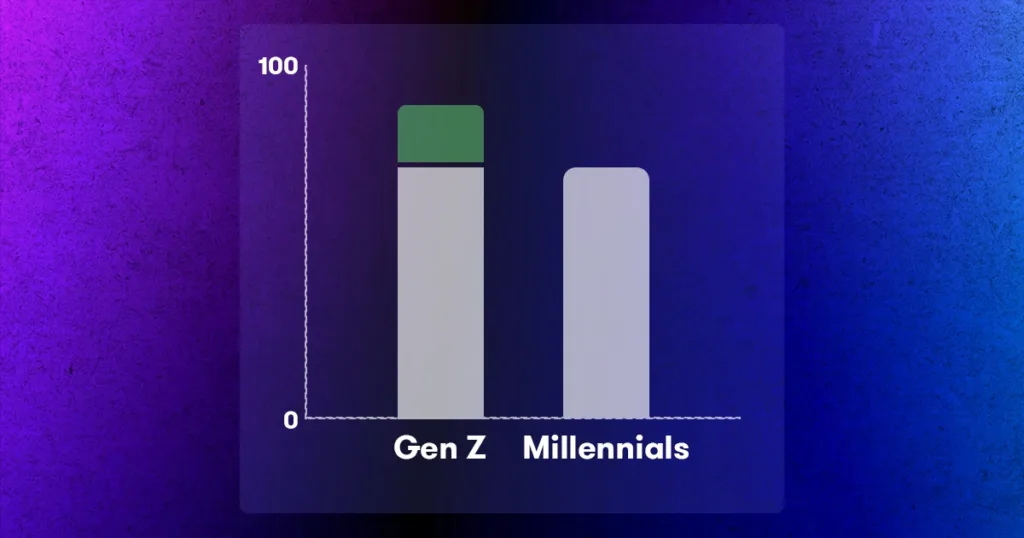
The impact of user-generated content on purchasing decisions is particularly pronounced among younger demographics, with 70% of Gen Z and 78% of Millennials finding UGC to be a very helpful part of their buying journey.
Unlike previous generations, who may have relied more on traditional advertising and expert endorsements, these younger groups place a premium on the genuine insights and experiences shared by their peers, including both organic content and content created within the context of brand interactions.
This preference for UGC underscores its importance in shaping future marketing strategies, as brands look to engage with these influential consumer segments in a meaningful and authentic way.
3. By 2033, 78% of all content online will be UGC [3]
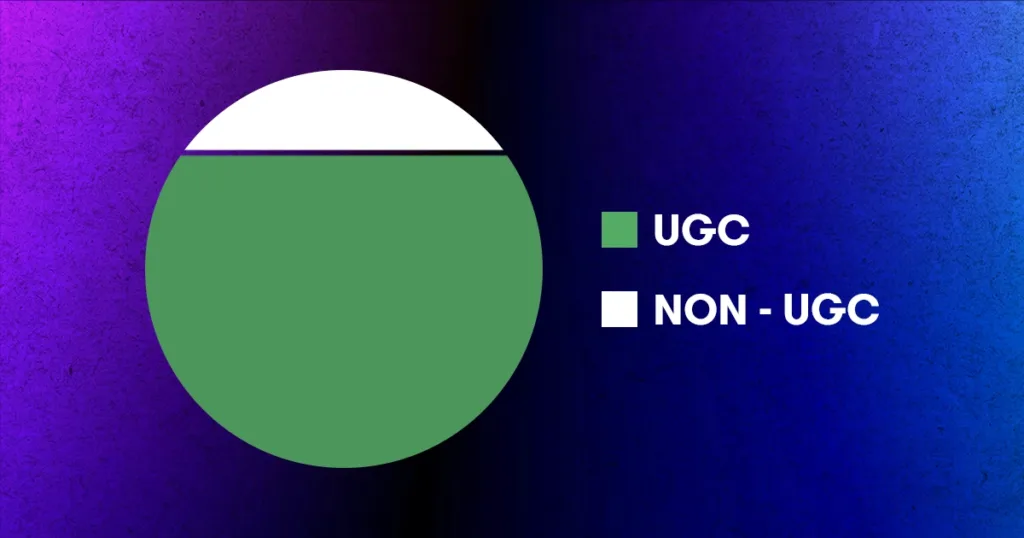
Looking forward, the landscape of online content is set to undergo a profound transformation, with predictions indicating that by 2033, 78% of all online content will be user-generated.
This projection not only signifies the growing influence of individual creators and consumers in shaping online narratives but also highlights the broadening definition of UGC itself.
As digital platforms evolve and new forms of content creation emerge, the distinction between professionally produced branded content and user-generated content becomes increasingly nuanced.
This shift points to a future where the lines between creator and audience blur, with user-generated content playing a pivotal role in driving trends, shaping consumer perceptions, and influencing purchasing decisions on a global scale.
Learn more about why UGC is so important.
4. Social media users react more positively to ads with UGC, showing a 73% increase in positive feedback [4]
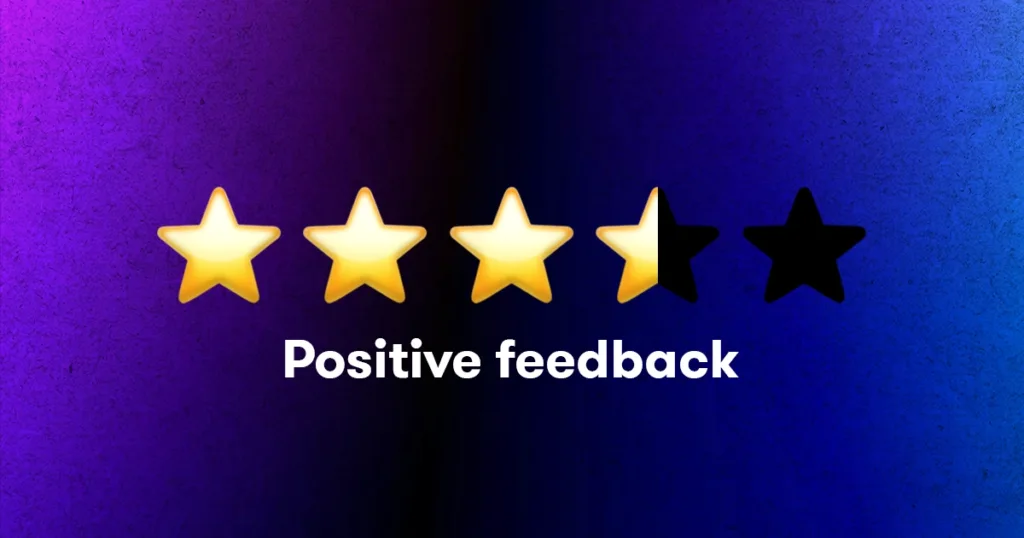
This significant increase in good comments underlines the power of authenticity in digital marketing. User-generated content naturally resonates with viewers by offering relatable and genuine experiences, making ads feel more like shared stories from within the community than polished corporate messages.
This strategy not only enhances brand perception but also fosters a stronger connection between consumers and brands.
5. 86% of brands and retailers believe authentic user content could significantly improve ad performance [5]

This consensus reflects a growing recognition of the value that customer experiences and endorsements bring to advertising campaigns. Authentic UGC, such as customer reviews and real-life product usage images, provides prospective buyers with relatable and trustworthy insights, encouraging a more favorable response to ads and potentially boosting conversion rates.
6. Millennials remember user-generated content 35% better than regular ads [6]
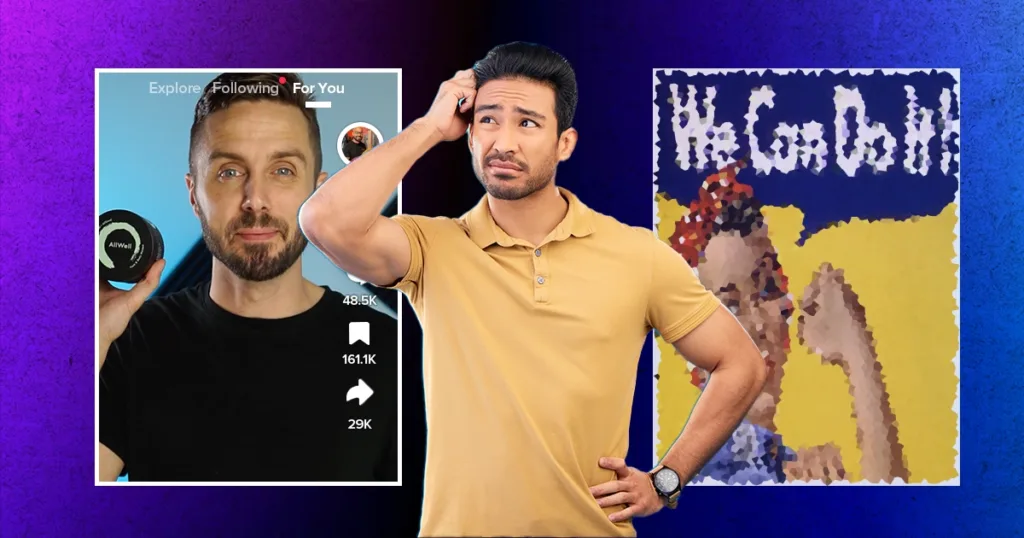
Millennials, a key demographic for many marketers, find UGC to be 35% more memorable than content produced through traditional media channels. This statistic highlights the impactful nature of UGC among younger audiences, who often seek out and place greater trust in the opinions and experiences shared by their peers over conventional advertising.
The authenticity and personal touch of UGC contribute to its lasting impression, making it a critical element for brands aiming to engage effectively with this demographic.
7. UGC content earns a 28% higher engagement rate on social networks than traditional brand content [7]
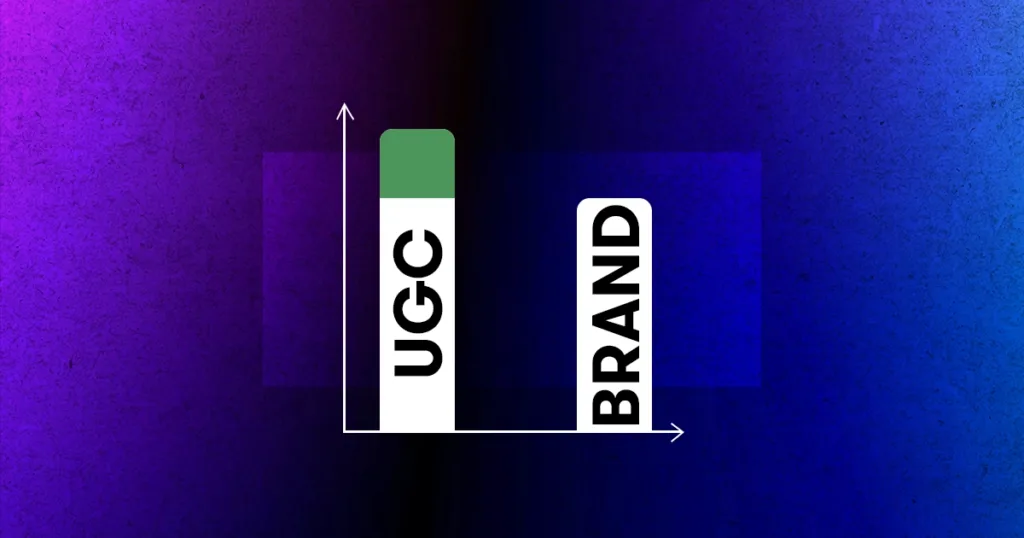
This statistic highlights the potent impact of UGC in capturing audience attention and fostering interaction. For brands and marketers, this suggests the effectiveness of incorporating a variety of UGC, not limited to spontaneously shared consumer experiences but also including content that aligns with brand initiatives.
Strategically utilizing UGC can significantly enhance a brand’s social media engagement, offering a compelling reason to integrate such content into their marketing strategies actively.
8. People find user-generated content 3 times more authentic than professional brand-generated content [8]
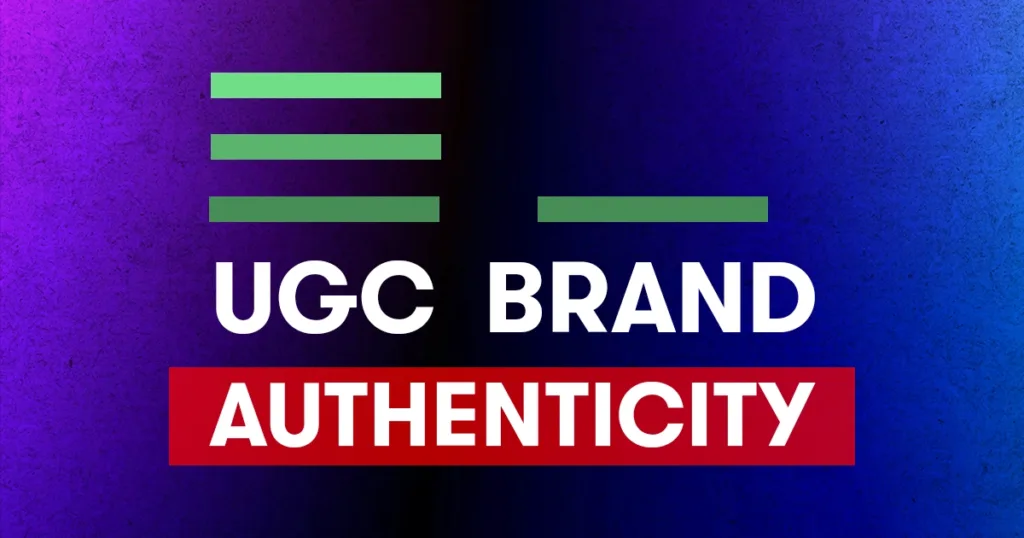
This is critical for brands looking to strengthen their market position, as it underscores the importance of leveraging diverse forms of UGC to boost credibility and trustworthiness.
Brands can encourage the creation of UGC that aligns with their messaging and values, utilizing platforms and campaigns that facilitate the sharing of high-quality user content. This approach not only enhances perceived authenticity but also actively involves the brand in guiding the narrative.
9. 60% of consumers view UGC as the most authentic form of marketing content [9]
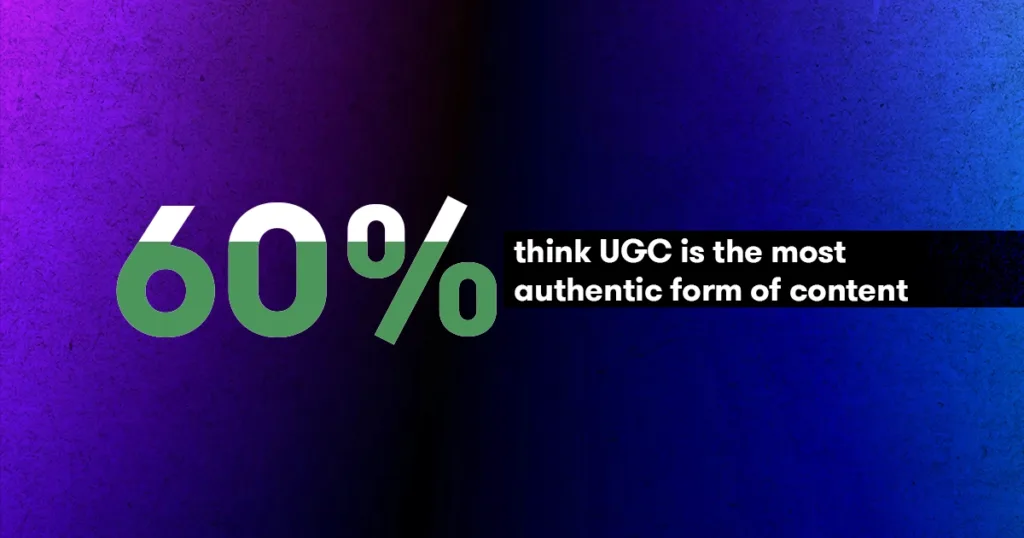
A significant 60% of consumers regard user-generated content as the most authentic form of marketing, underscoring the value of UGC in creating genuine brand perceptions.
For marketers, this signals an opportunity to diversify their content strategy to include UGC that resonates with their audience’s desire for authenticity. By leveraging UGC in their marketing efforts, brands can better align with consumer expectations, creating campaigns that feel more relatable and trustworthy.
10. Recommendations from friends and family are trusted by 92% more than any form of advertising [10]
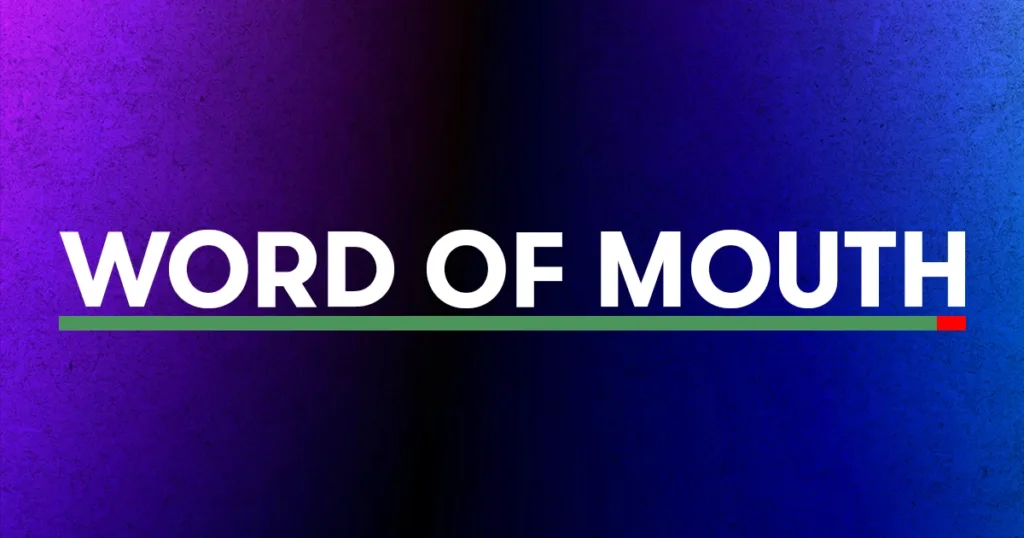
This preference underscores the impact of personal connections and the perceived authenticity of recommendations that come from within one’s own social circle.
It hints at the enduring power of word-of-mouth marketing in the digital age, suggesting that even as advertising techniques become more sophisticated, the simple endorsement of a product by someone you trust remains unmatched in its influence.
Brands can leverage this by encouraging happy customers to share their experiences, effectively turning satisfied users into a potent marketing force.
11. Short-form video reigns supreme as the top media format with the highest return on investment (ROI) [11]
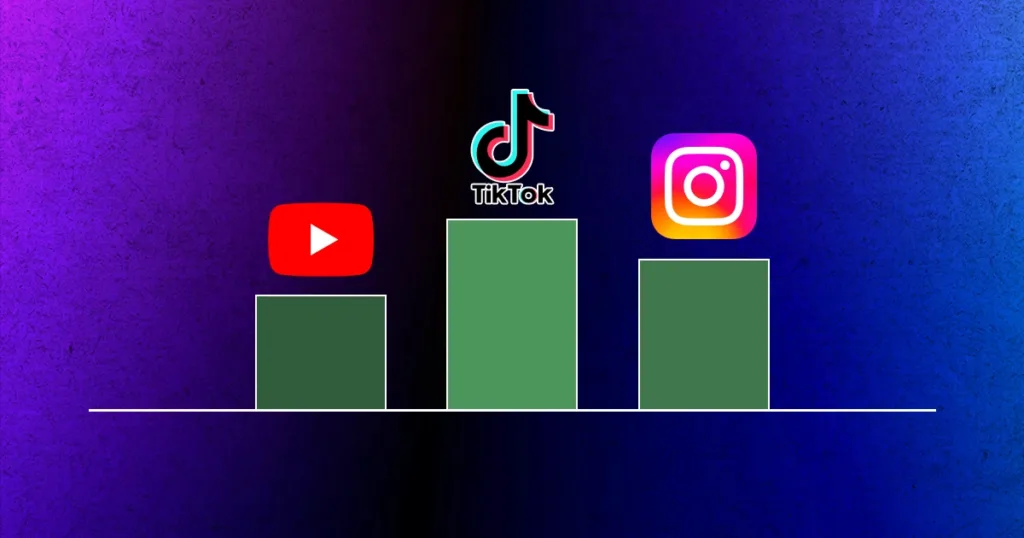
The dominance of short-form video as the leading media format, offering the highest ROI, speaks volumes about the changing consumption patterns of today’s audience.
This trend is driven by the fast-paced nature of modern life and the constant flow of information, which has increased the appetite for quick, engaging content.
Short-form videos cater to this demand by delivering messages in a concise and captivating way, making them an invaluable tool for marketers. Their ability to convey a story or highlight a product within a few seconds or minutes maximizes engagement and encourages sharing, amplifying their reach and impact.
Explore UGC video examples for your next creative
12. User-generated product videos evoke 84% emotional intensity [12]
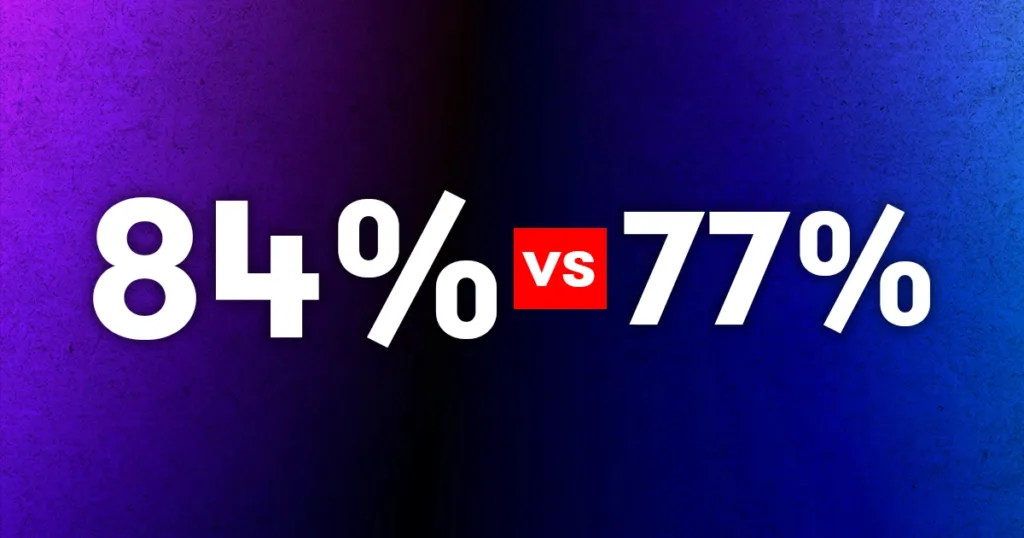
UGC product videos have a unique ability to connect with viewers on an emotional level, achieving an 84% emotional intensity rate compared to the 77% elicited by traditional branded content.
UGC videos often feature real-life scenarios, genuine reactions, and personal testimonials that viewers can relate to, making the content more impactful and memorable.
This emotional connection is crucial for brands, as emotionally engaged consumers are more likely to develop a strong brand affinity and make purchasing decisions based on these feelings.
13. Half of marketers incorporate user-generated content in their email campaigns [6]
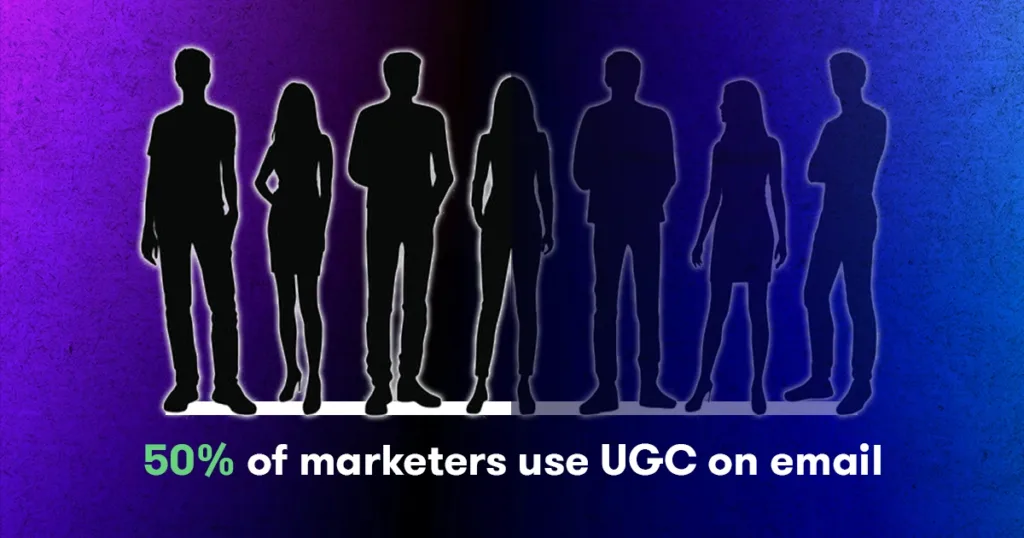
Despite the proven effectiveness of UGC in engaging and connecting with audiences, it’s somewhat surprising that only 50% of marketers have tapped into its potential within email marketing. This figure seems modest, especially considering the compelling impact UGC has demonstrated across other marketing channels.
Incorporating UGC into emails can significantly enhance the personal touch that consumers crave in their inboxes. Unlike standard branded messages, which can often feel impersonal or sales-driven, emails featuring UGC—such as customer testimonials, photos, or stories—resonate as more genuine and engaging.
This approach aligns with the desire for more personalized email content, making recipients feel valued and part of a community rather than just targets of advertising.
By leveraging the authenticity and relatability of UGC, marketers can transform their email campaigns into a more welcome and less intrusive presence, potentially reaping the benefits of increased open rates, engagement, and customer loyalty.
14. UGC in email marketing boosts click-through rates by 78% [13]
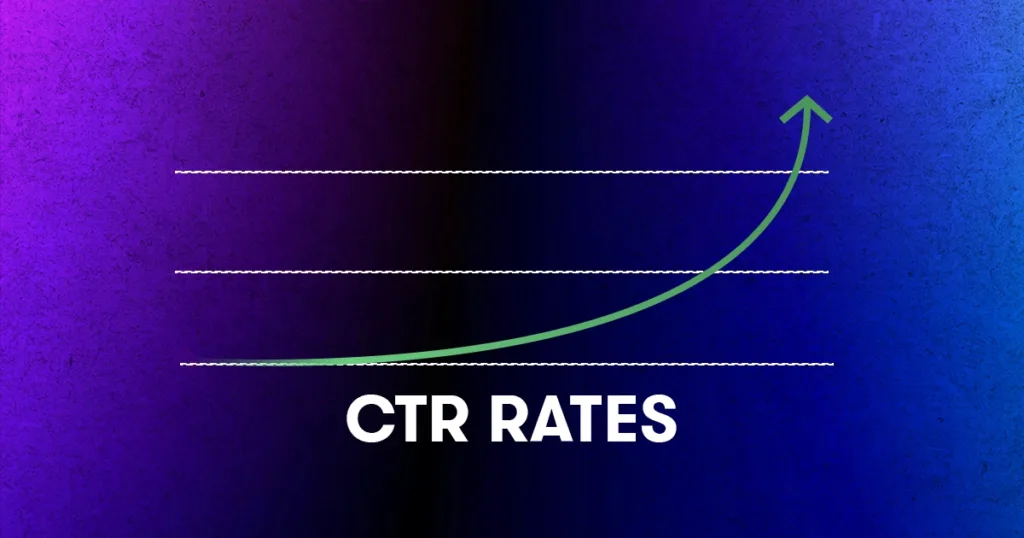
This statistic underscores the significant opportunity 50% of marketers are missing out on. The substantial increase in engagement, as measured by click-through rates, highlights the effect of integrating relatable content into email campaigns.
Emails with UGC not only feel more personalized and less intrusive but also more compelling (see stat #1), prompting recipients to take action more frequently than those containing solely branded content.
By embracing UGC, marketers can transform their email campaigns into a dynamic conduit for engagement, driving not just higher click-through rates but also fostering a deeper sense of community and trust among their customer base.
Explore the best performing UGC hooks for your next campaign
15. 62% of consumers prefer clicking on marketing featuring real customers [14]
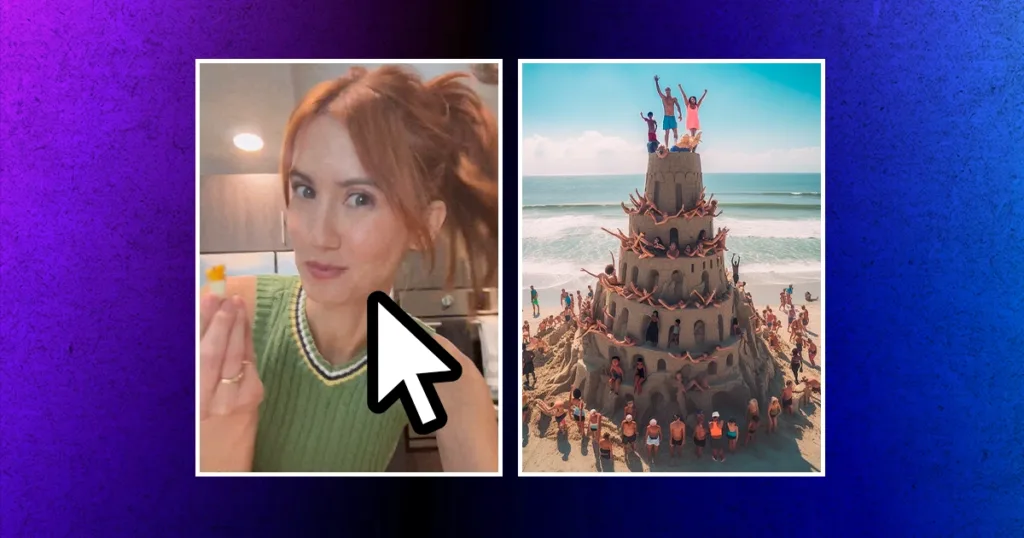
A significant 62% of consumers report a higher likelihood of engaging with marketing materials—whether ads, social media posts, emails, or websites—that include real customers instead of using solely brand-created promotional images.
Consumers’ inclination toward content showcasing real people reflects broader trends in digital marketing, where authenticity and personal connection are increasingly valued.
For brands, this offers a compelling reason to integrate UGC and customer testimonials into their marketing strategies. Doing so can significantly boost engagement rates, as consumers are drawn to the credibility that real customer features provide.
16. A quarter of search results for major brands link to user-generated content [15]
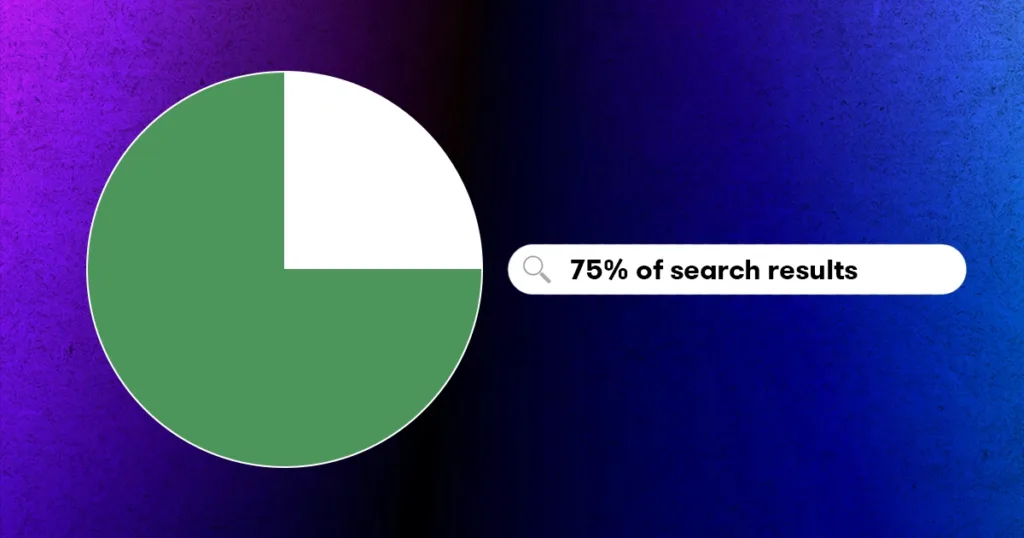
This shows the substantial digital footprint UGC has established, influencing not only brand perception but also online visibility.
The prominence of UGC in search results underscores its significant impact on how brands are discovered and engaged with online. It reflects the organic spread of brand-related content created by users across various platforms, from social media posts and reviews to blogs and videos.
This relatively high proportion of UGC in search results highlights the importance for brands to monitor and engage with the content their customers create.
It also points to the potential of UGC in enhancing a brand’s search engine optimization (SEO) strategy. By encouraging and curating high-quality UGC, brands can leverage this content to improve their SEO rankings.
17. AI-enhanced tools will produce 35% of UGC by 2030 [16]
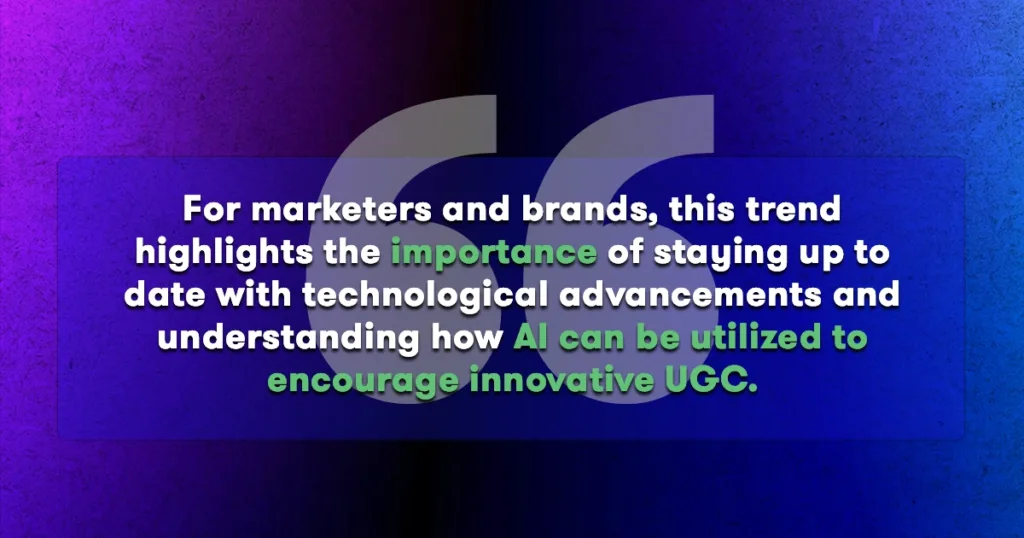
This forecast points to the evolving landscape of content creation, where technology plays an increasingly central role. AI-enhanced tools, such as automated video editing software, language generation models, and image creation platforms, are making it easier and more accessible for users to produce high-quality, engaging content.
The integration of AI into UGC creation signifies a shift towards more sophisticated and varied content, potentially altering the types of UGC that brands and audiences value.
For marketers and brands, this trend highlights the importance of staying up to date with technological advancements and understanding how AI can be utilized to encourage innovative UGC.
It also suggests a future where the line between professionally produced content and UGC becomes even blurrier, as AI tools empower users to create content that rivals the quality of brand-created materials.
18. 84% of consumers trust brands more that incorporate UGC into their marketing [17]
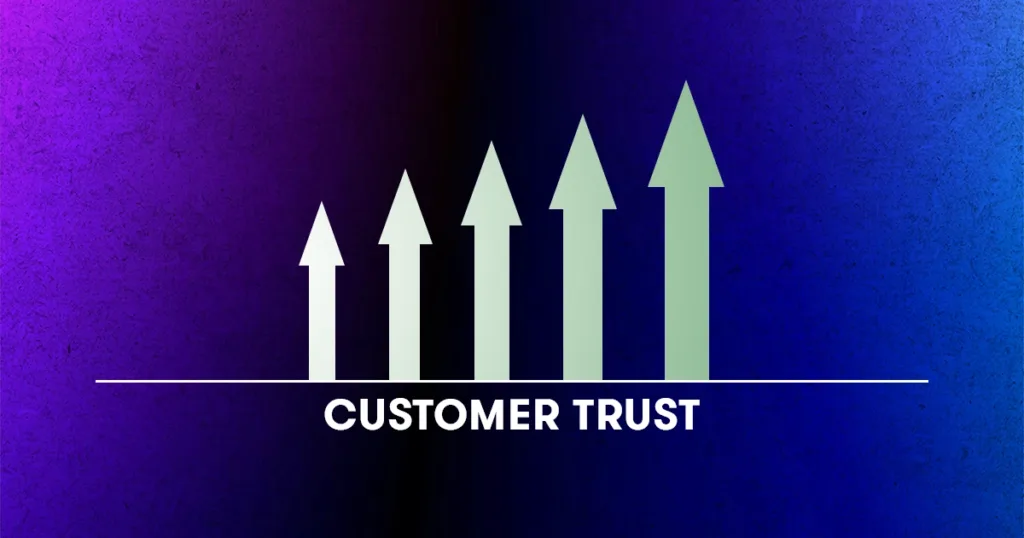
Furthermore, 77% of respondents express a higher tendency to buy products or services from such brands.
For brands, these findings emphasize the importance of weaving UGC into their marketing narratives across platforms and touchpoints. It highlights an opportunity to leverage UGC strategically, not just to enhance brand perception but also to directly impact their bottom line.
Engaging with and encouraging the creation of UGC can thus be seen as a critical component of modern marketing strategies, aiming to build trust and stimulate sales in a competitive market environment.
19. 42% of marketers recognize UGC as a crucial element of their strategy [18]
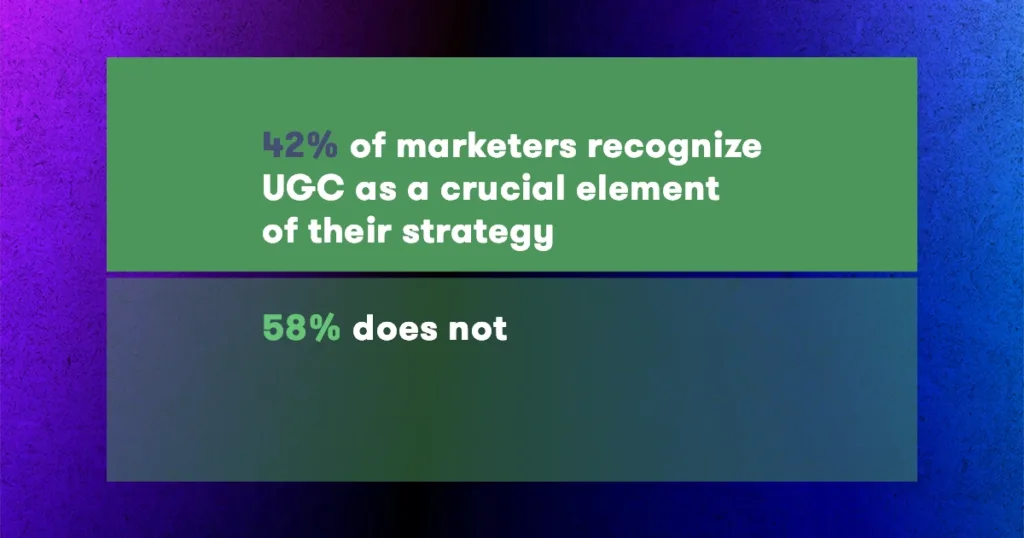
Despite the widespread acknowledgment of user-generated content’s benefits, it’s somewhat surprising that only 42% of marketers identify UGC as a key component of their marketing strategy.
This figure may raise eyebrows, given the apparent omnipresence of UGC in modern marketing and its proven impact on engagement, trust, and authenticity.
The statistic suggests that while many brands understand the importance of UGC, a significant portion has yet to fully integrate it into their strategic planning. This gap presents an opportunity for those lagging behind to reassess and embrace UGC more comprehensively.
20. Virtual Reality (VR) UGC will grow 300% by 2029, signaling a rapidly growing market [7]
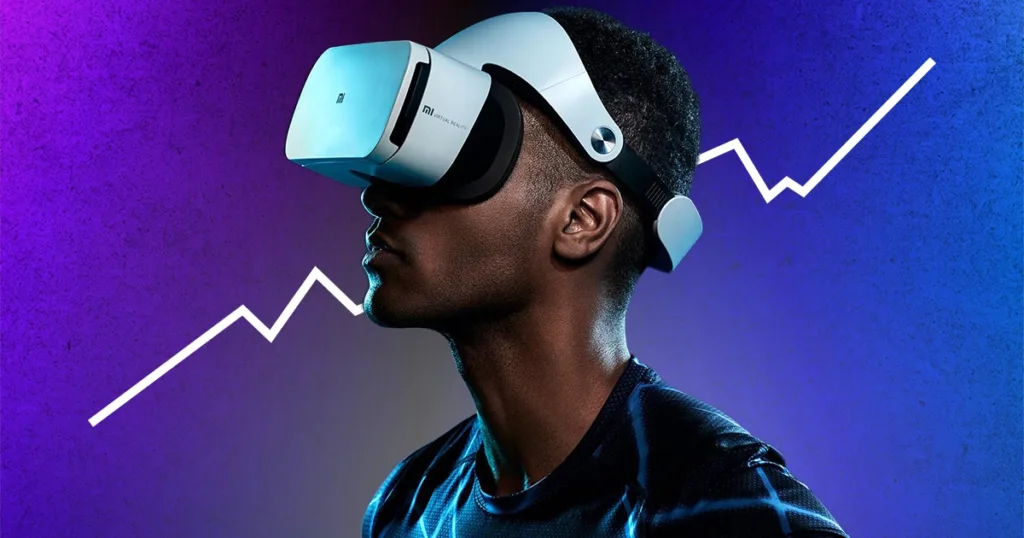
Virtual Reality (VR) UGC is on the brink of a significant transformation, projected to experience a 300% growth by 2029. Despite VR UGC being a relatively new concept that is still in the process of finding its audience, the momentum behind VR—fueled by the introduction of technology like Apple Vision Pro—suggests this shift is imminent.
The anticipated growth of VR UGC underscores the evolving landscape of digital content creation, where immersive experiences become a new frontier for user interaction.
As the VR ecosystem continues to mature, with tools and platforms becoming increasingly user-friendly, VR UGC is poised to redefine the boundaries of creativity and engagement, marking an exciting phase of incredible growth in the years to come.
21. 97% of Gen Z turn to social platforms for shopping inspiration [19]
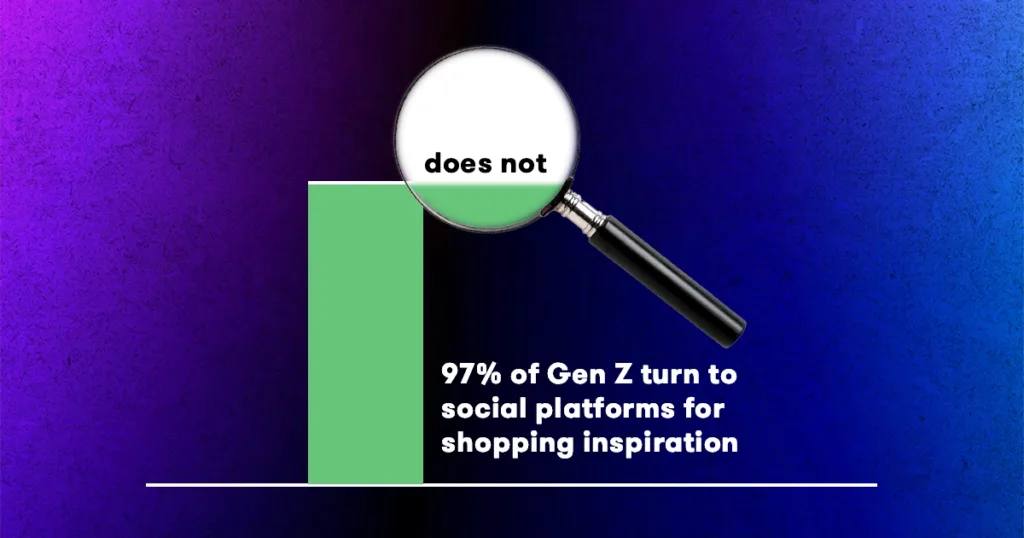
This trend is largely fueled by their desire for authentic, organic content, which they trust over traditional advertising. Social media’s abundance of real-life user experiences, from styling tips and product reviews to unboxing videos, offers Gen Z a wealth of genuine insights that guide their purchasing decisions.
This reliance on social platforms reflects a broader shift in consumer behavior, with younger audiences valuing transparency and authenticity above polished marketing messages.
For brands targeting Gen Z, this highlights the importance of engaging with these platforms not just for promotion, but as spaces to foster community, share user-generated content, and connect with consumers in a meaningful, relatable way.
22. Nearly half of marketers view UGC as a key to humanizing marketing efforts [4]
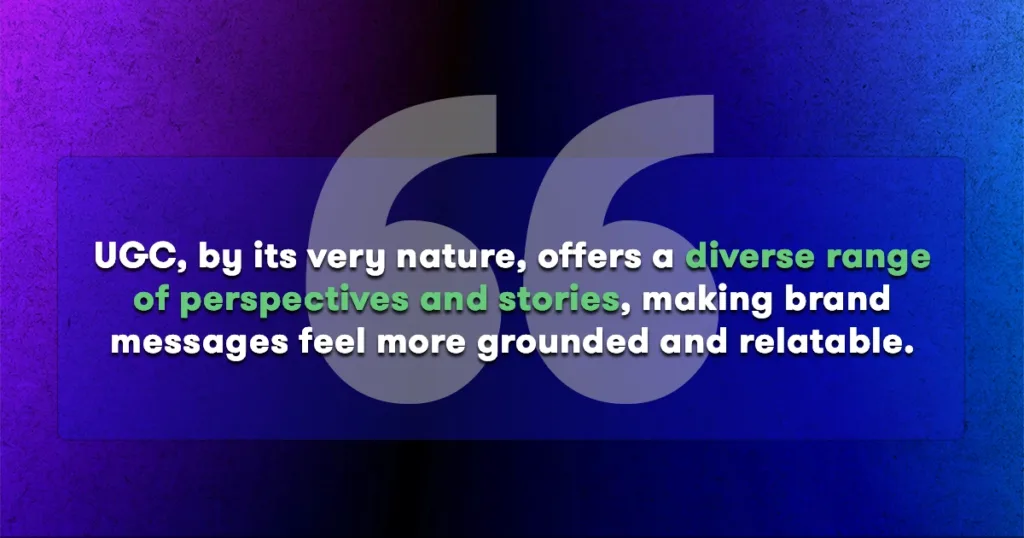
48% of marketing professionals believe that user-generated content (UGC) plays a crucial role in humanizing marketing strategies.
The move to humanize marketing through UGC is a response to the effectiveness of relatable content in engaging audiences. Consumers are more likely to trust and feel connected to brands that present themselves through the lens of their own customers’ experiences.
UGC, by its very nature, offers a diverse range of perspectives and stories, making brand messages feel more grounded and relatable. As marketing professionals navigate the challenge of standing out in a crowded digital landscape, leveraging UGC to humanize their brand becomes essential.
23. A staggering 94% of consumers have been dissuaded from a purchase by online reviews [20]
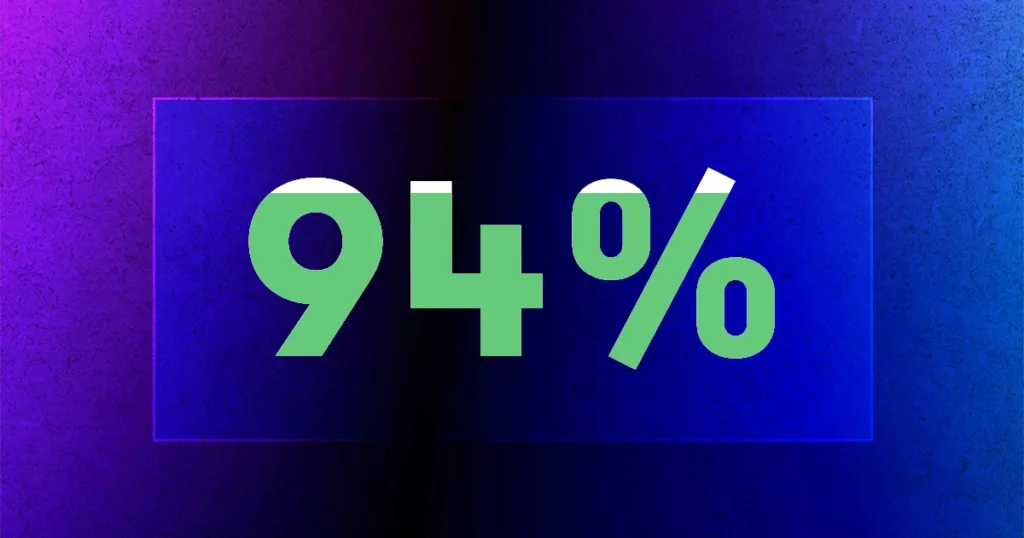
The impact of this trend underscores the critical role that online reviews, a key form of user-generated content (UGC), play in the modern shopping journey.
The reason behind the significant influence of online reviews lies in their ability to provide unbiased feedback from individuals who have experienced the product or service firsthand. In an age where information is abundant, the authenticity and relatability of such reviews are invaluable to consumers navigating their options.
For brands, this highlights the importance of managing their online reputation and engaging with customer feedback—both positive and negative. Addressing concerns and fostering a positive customer experience become essential strategies in influencing consumer perception and mitigating the potential for negative reviews to impact purchasing decisions.
24. 73% of consumers feel more confident in their purchases when brands use user-generated content [21]
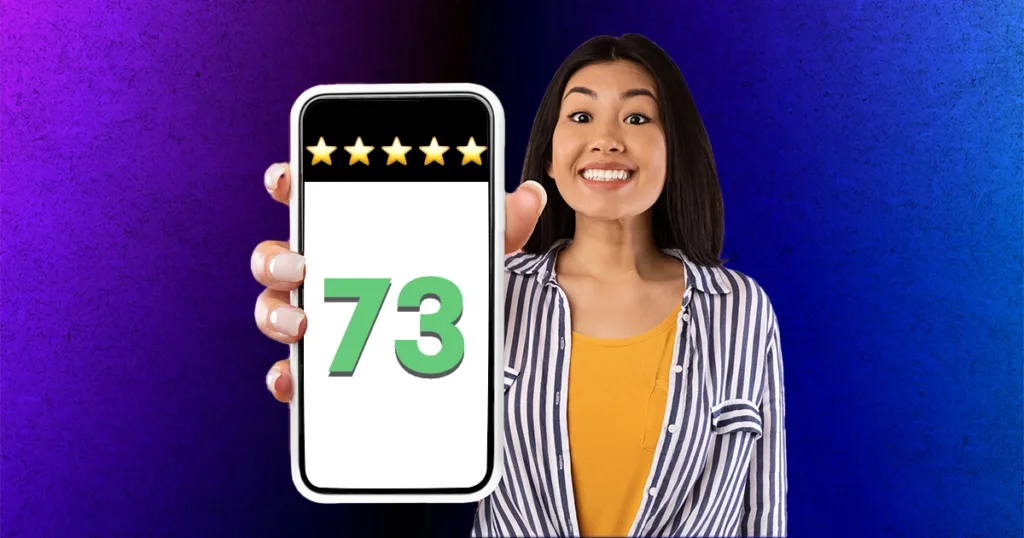
An impressive 73% of consumers report increased confidence in their buying decisions when they encounter UGC associated with a brand. This statistic highlights a crucial aspect of consumer psychology—buying confidence—which plays a significant role in the purchasing process.
Buying confidence refers to the assurance and trust consumers feel towards their potential purchase, significantly influenced by their perception of the brand and its products.
The relationship between UGC and buying confidence is rooted in the genuine experiences shared by other consumers. Seeing real people use, review, and recommend products offers potential buyers a form of social proof that branded content alone cannot replicate.
This social proof not only alleviates concerns over product quality or value but also helps consumers visualize the product in their own lives, further solidifying their decision to purchase.
25. Nearly 75% of US companies with 100+ employees will engage in influencer marketing this year, projected to rise to 90% by 2026 [22]

The drive towards influencer marketing is largely due to the changing landscape of consumer engagement and trust. Influencers, by their perceived authenticity and close relationship with their audience, have the power to sway purchasing decisions significantly.
They offer brands a humanized approach to reaching their target demographic, bridging the gap between traditional advertising and genuine consumer recommendations.
The projected increase to 90% indicates not only the effectiveness of influencer marketing in driving brand awareness and conversion rates but also its evolving role within the broader marketing mix.
26. 84% of Gen Z places trust in brands that showcase real customers in their ads [23]
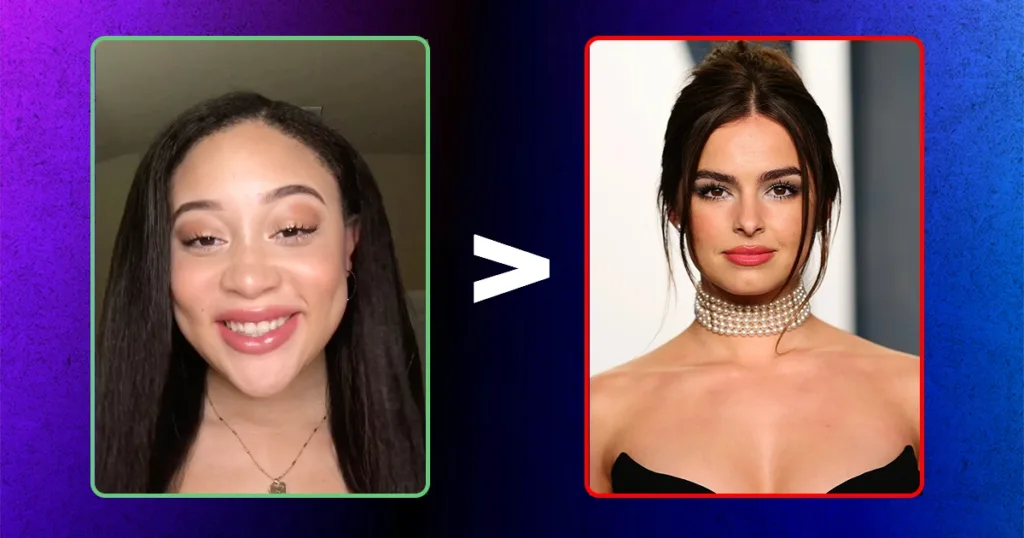
This highlights a significant trust dynamic within the Gen Z demographic towards brands that incorporate real customer experiences and images in their advertising. The preference for ads featuring real people underscores Gen Z’s demand for authenticity and transparency from brands.
This demographic, known for its savvy consumption habits and desire for genuine brand connections, values seeing people like themselves represented in marketing materials. It serves as a powerful form of social proof, reinforcing the credibility of the brand and its offerings.
27. Interactive UGC set to surge by 150% in use by 2031 [24]
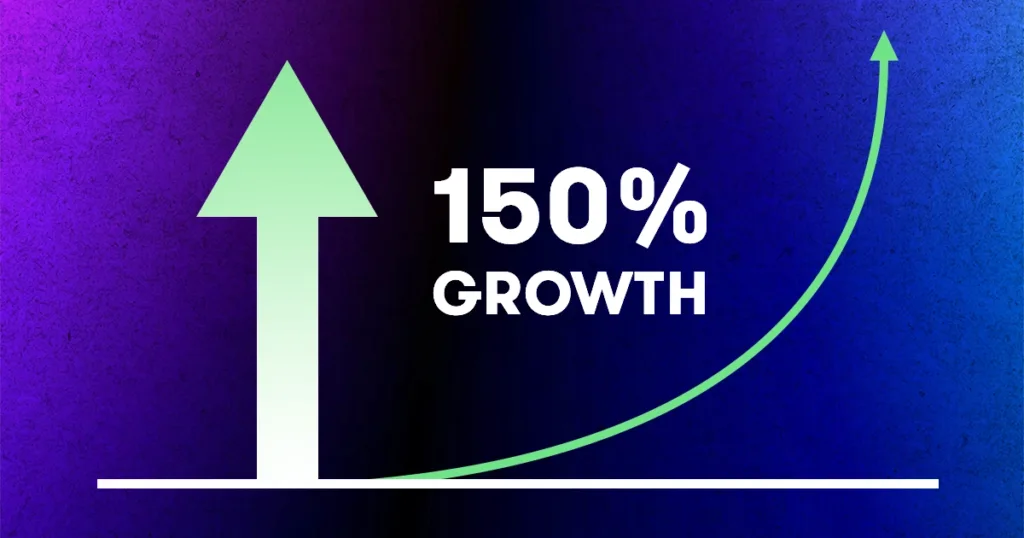
Interactive UGC––encompassing elements like polls, quizzes, and interactive stories––involves the audience directly, inviting them to participate in content creation or feedback processes rather than being passive consumers.
The projected surge in interactive UGC underscores a growing trend in digital content consumption towards engagement and interactivity. This reflects the evolving expectations of consumers, who increasingly value the opportunity to influence and participate in brand narratives.
By leveraging interactive UGC, brands can create more engaging, personalized, and memorable experiences, aligning with the trend toward greater audience involvement in brand storytelling.
28. UGC to drive 80% of SEO-enhancing content by 2030, marking a significant shift in digital marketing strategies [25]
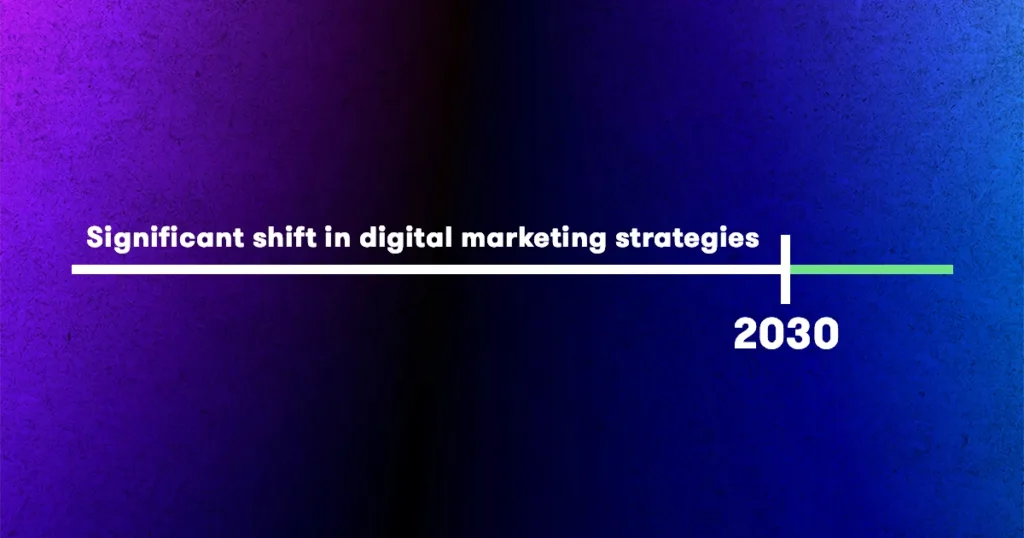
UGC, including reviews, blog posts, comments, and social media content, naturally incorporates a wide range of keywords and phrases used by real users, making it invaluable for SEO.
This trend reflects a broader move towards prioritizing content that resonates with actual consumer experiences and language, as search engines continue to refine their algorithms to favor content that is both relevant and valuable to users.
For brands, this means that leveraging UGC becomes not just a strategy for direct customer engagement but also a vital tactic for improving online visibility and attracting organic traffic.
29. UGC-based ads achieve a 400% higher click-through rate than traditional advertising [26]
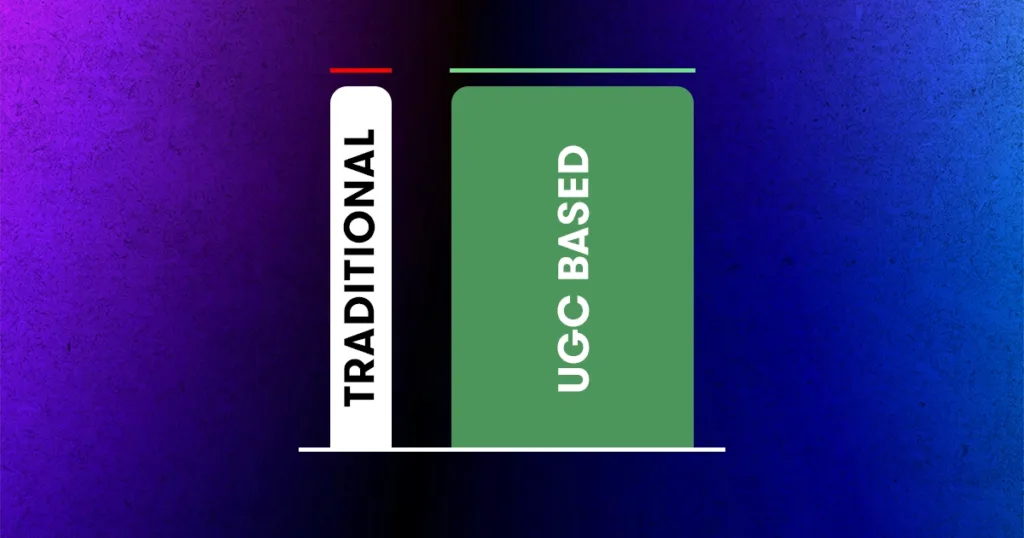
The reason is pretty simple: UGC-based ads resonate more deeply with audiences because they feature authentic stories, reviews, and visuals that viewers find more trustworthy and relatable than polished promotional content. Nobody likes feeling like they’re being pushed to buy.
As digital consumers become increasingly adept at navigating and filtering online content, they show a clear preference for ads that feel personal and genuine. This shift underscores the importance for brands to rethink their advertising strategies, moving towards incorporating UGC to capture attention.
30. Over 40% of major companies to adopt dedicated UGC strategies by 2031, signaling a strategic pivot [27]
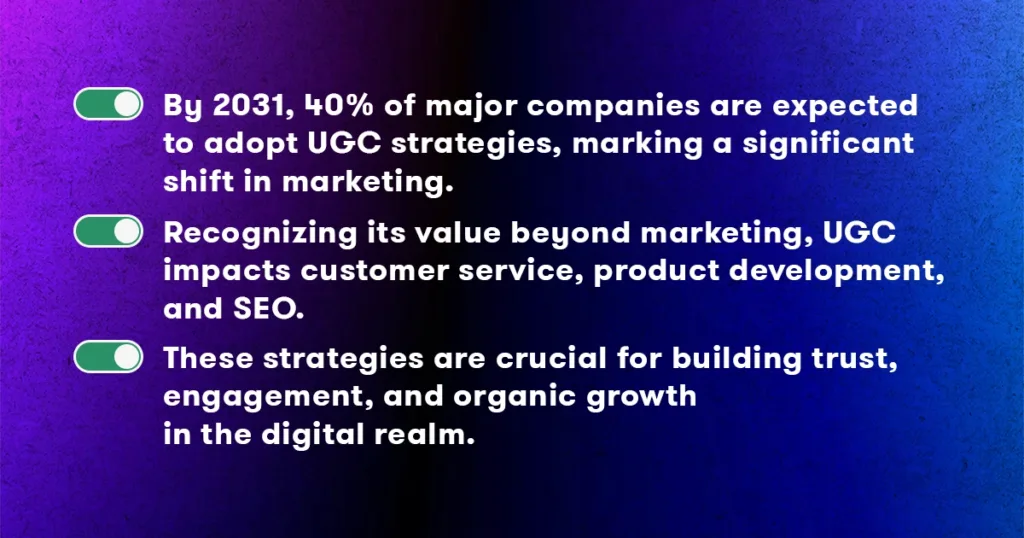
By 2031, more than 40% of major companies are projected to have a dedicated UGC strategy in place. This projection shows a significant shift in how businesses approach content and marketing as a whole.
The move towards formalizing UGC strategies reflects the growing recognition of its value not only in marketing and brand building but also across customer service, product development, and SEO enhancement.
This strategic pivot highlights an evolving understanding of UGC’s role in building brand trust, user engagement, and driving organic growth. As companies look to deepen connections with their audiences and stand out in a competitive digital landscape, the adoption of comprehensive UGC strategies becomes a critical component of their overall business approach.
31. UGC ads cut cost-per-click by 50% compared to traditional ads [28]
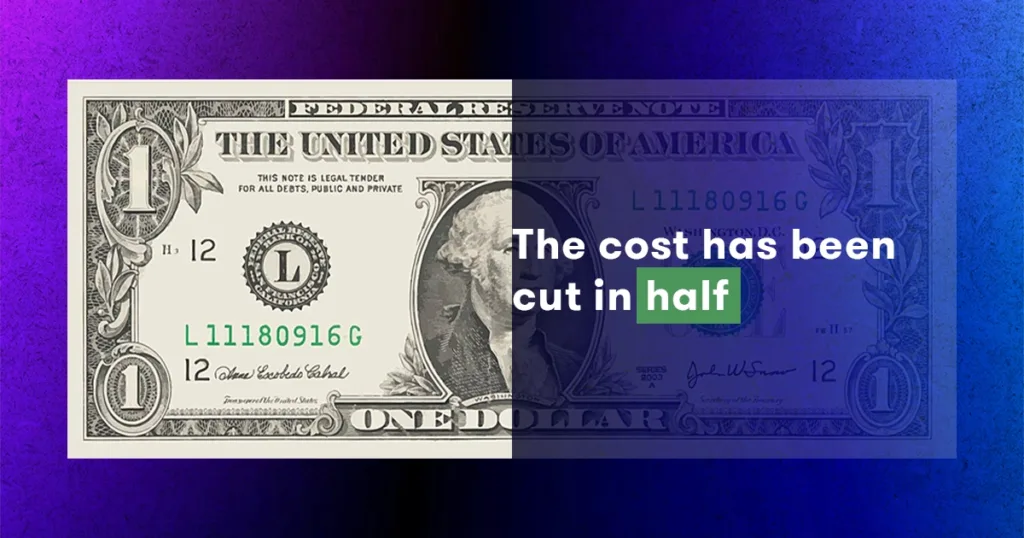
Ads that use content created by users are not just more engaging; they’re also more cost-effective, reducing the cost-per-click (CPC) by half when compared to standard ads.
This significant decrease in CPC means companies can reach more people for less money, making their advertising budgets go further. It shows the efficiency of leveraging authentic experiences and perspectives in advertising, offering a smarter way for brands to connect with their audience without breaking the bank.
32. 42% of consumers would purchase products showcased through user-generated photos alone [29]
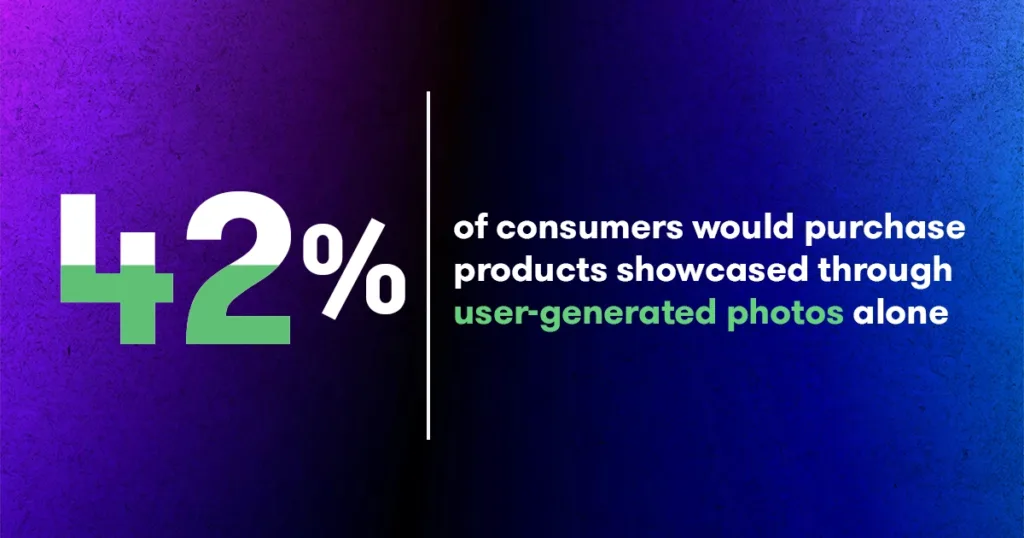
A notable 42% of shoppers are willing to buy products without seeing any professional photos, as long as there are user-generated images available. This preference shows the trust and authenticity consumers place in real-life visuals shared by others who have purchased the product.
33. Millennials lead in UGC creation, contributing over 70% [30]
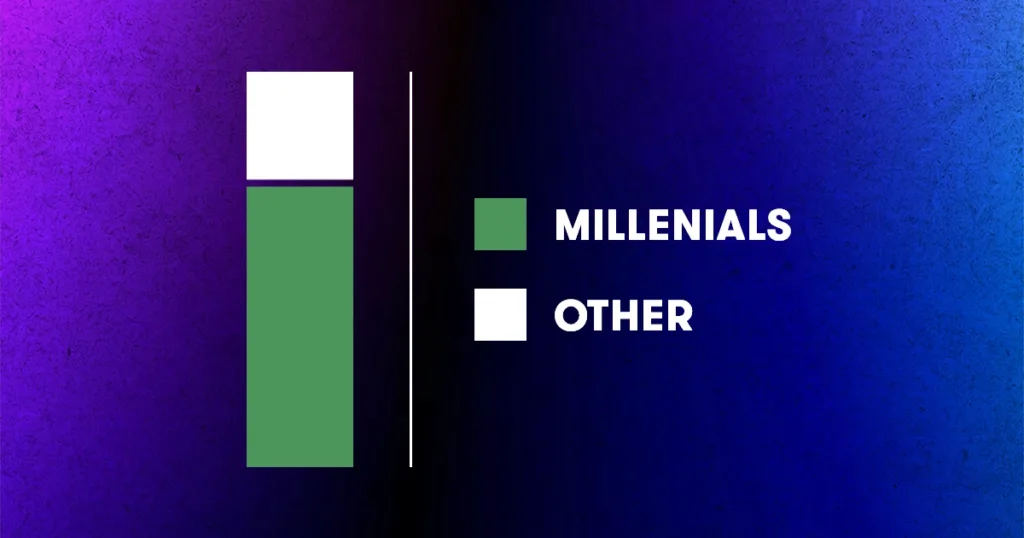
Millennials, particularly those aged 25 and older, are at the forefront of creating UGC, accounting for more than 70% of it.
This demographic’s active participation emphasizes their role in shaping online culture and influencing trends. Their engagement underscores the importance of brands understanding and tapping into the preferences and habits of this age group to foster a vibrant community of content creators.
34. UGC found nearly 10 times more impactful than influencer campaigns [31]
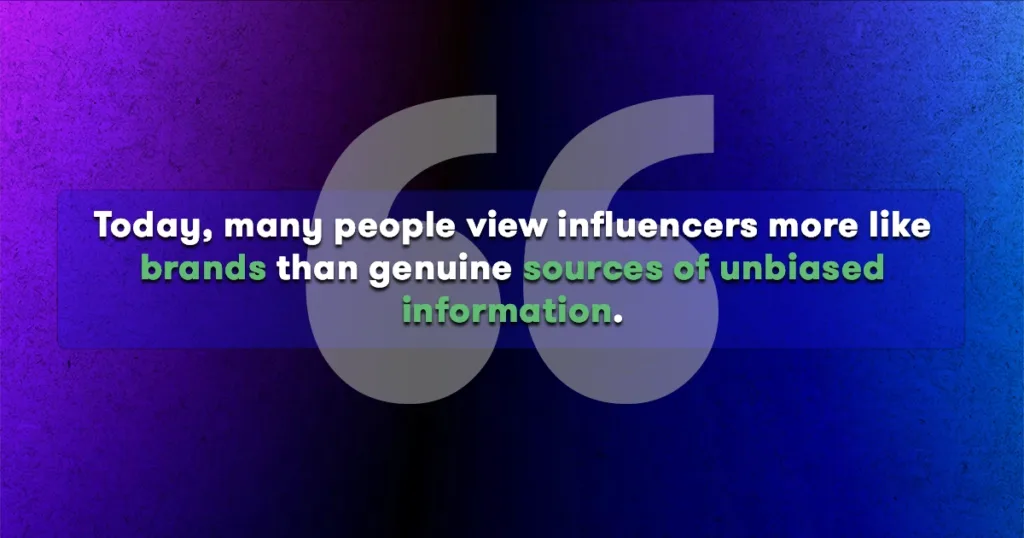
This stark difference not only highlights a shift in how people perceive authenticity and trustworthiness in marketing but also reflects the evolving view of influencer marketing itself.
Initially, influencer partnerships were seen as a trustworthy approach, blending personal endorsement with genuine product alignment. Over time, however, as influencer marketing became more widespread and polished, the perception shifted.
Today, many people view influencers more like brands than genuine sources of unbiased information. This change has led to a growing preference for UGC, which remains deeply rooted in customer experiences.
35. Including UGC in the online buying journey boosts conversions by 10% [32]
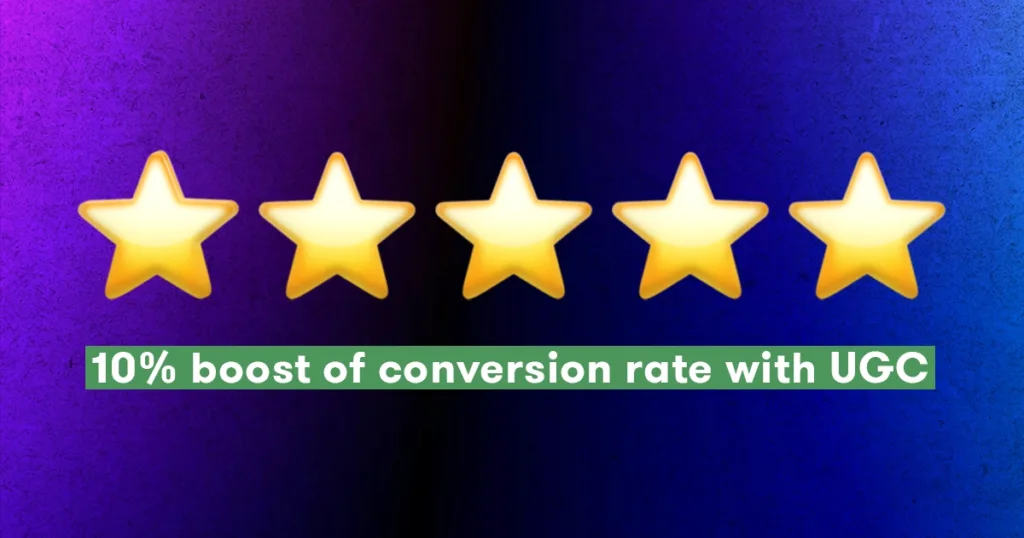
This effect is due to UGC’s ability to provide authentic validation and insights from fellow customers, guiding consumers toward making a purchase.
Placing UGC at strategic points in the buying journey helps address uncertainties and build confidence.
For example: on product pages (to offer immediate social proof), within FAQ sections (to address common inquiries and product specifics), during the checkout process (to reassure buyers about the value and satisfaction of their pending purchase), in email marketing (to re-engage customers, especially those who abandoned their carts or are considering a purchase).
36. 61% of Gen Z prefers UGC over other content formats [33]
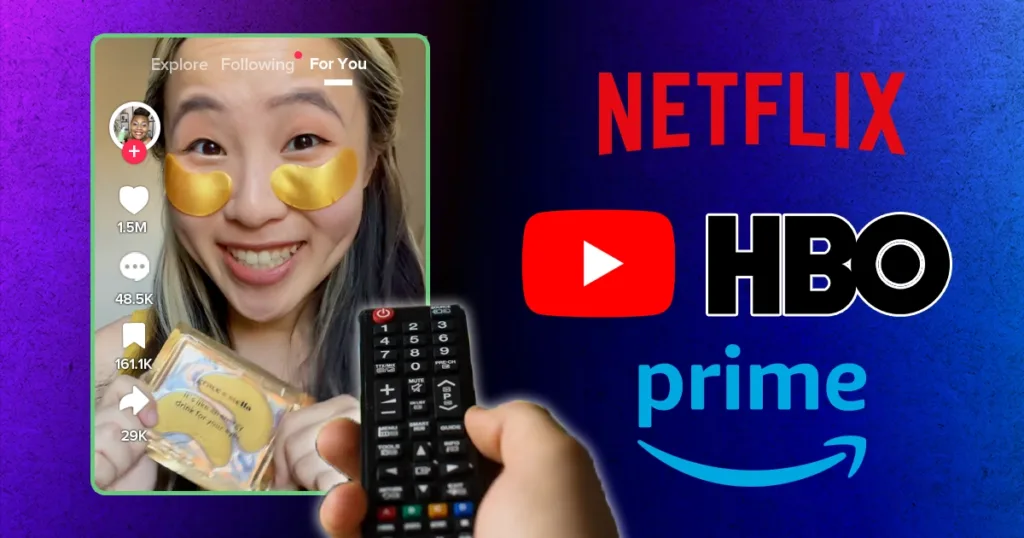
For brands, this statistic serves as a clear directive to prioritize UGC in their marketing strategies––businesses aiming for longevity cannot afford to overlook Gen Z.
As this demographic matures, they are set to become the main buying power, much like millennials today.
This transition emphasizes the critical importance of adapting marketing strategies to cater to Gen Z’s preferences now. By doing so, brands not only align with current trends but also position themselves strategically for future market dynamics.
37. Users on TikTok are 58% more likely to trust UGC than they are on other platforms [34]
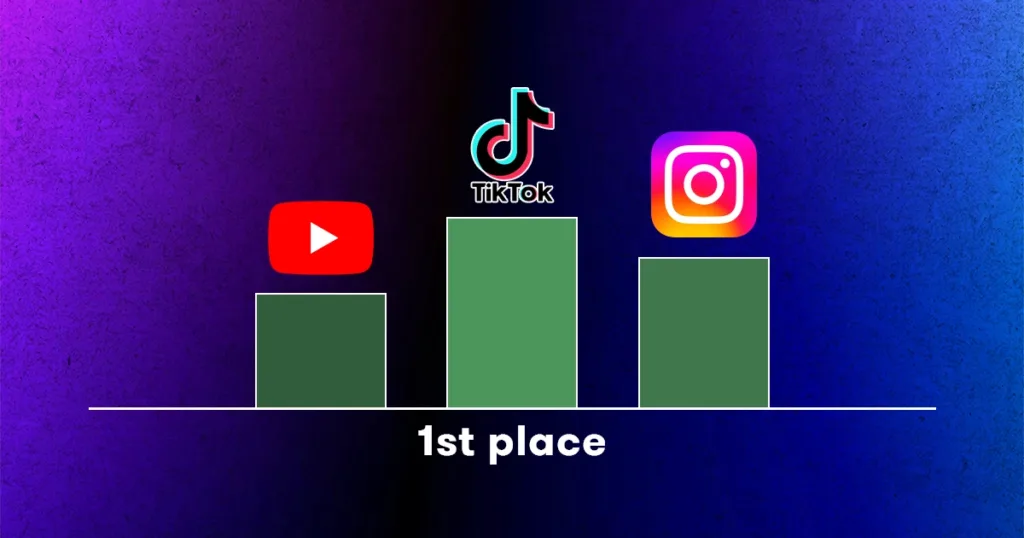
UGC’s tendency to go viral on TikTok demonstrates its power in capturing attention and building trust.
For brands aiming to tap into TikTok’s massive audience, the key lies in actively encouraging the creation of UGC. This could involve hosting challenges, engaging in trends, or simply fostering a community that feels empowered to share their own content related to the brand.
Moreover, leveraging UGC on TikTok allows brands to benefit from the platform’s unique algorithm, which prioritizes content engagement over follower count. This means that even smaller brands have the potential to see their content go viral, provided it strikes a chord with the audience.
38. UGC boosts online purchase conversion rates by 29% [35]
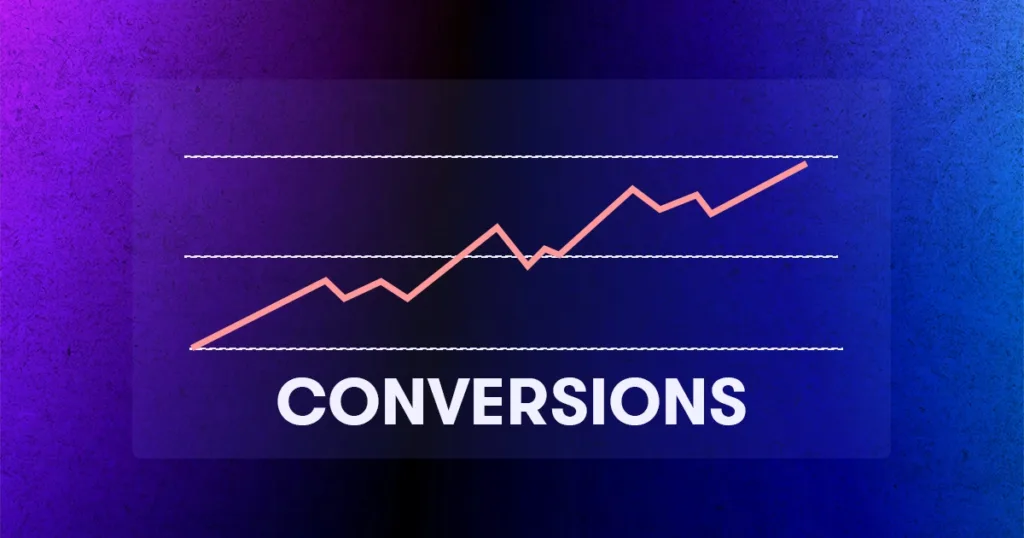
In an online shopping environment, where physical examination of products is not possible, UGC serves as a crucial bridge, providing potential buyers with the confidence needed to proceed with their purchases.
This involves more than just adding a reviews section to product pages; it’s about creating a comprehensive strategy that integrates UGC into various aspects of the online journey, from detailed product galleries featuring UGC images to leveraging positive customer feedback in marketing communications and social media.
Moreover, incorporating UGC can help mitigate the skepticism often associated with online shopping, as consumers tend to trust the opinions of fellow shoppers over traditional advertising. By showcasing real user experiences, brands can effectively demonstrate product value and quality, directly addressing common consumer concerns and objections.
39. Only 15% of consumers prefer brand-created visuals [36]
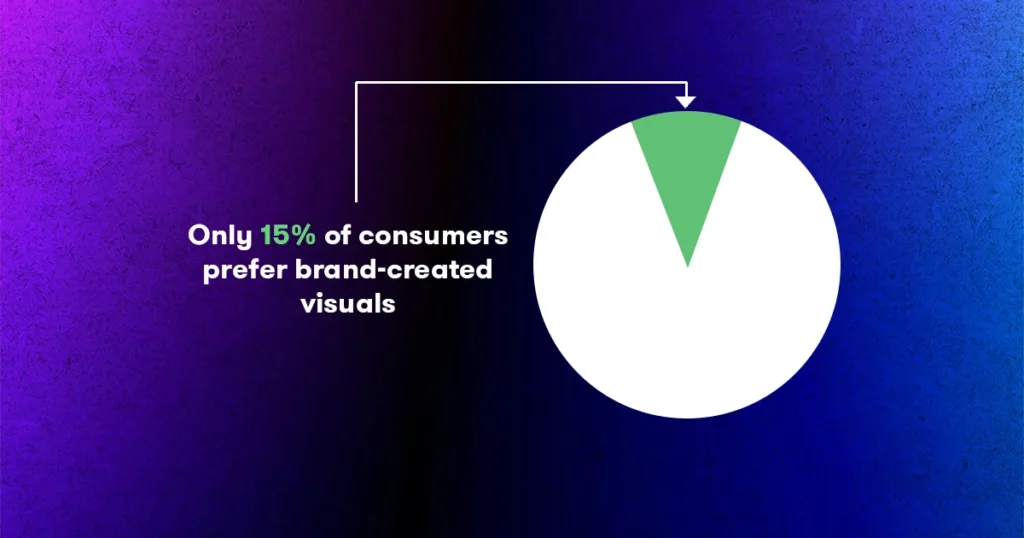
While high-quality, brand-created visuals remain important for establishing a product’s appeal, the fact that only a small fraction of consumers prefer these over UGC suggests a shift in what influences purchasing decisions.
This shift indicates a growing demand for content that consumers can relate to on a personal level, highlighting an opportunity for brands to rethink their visual content strategy to include more UGC.
40. Incorporating UGC leads to an 18% revenue increase for companies [37]
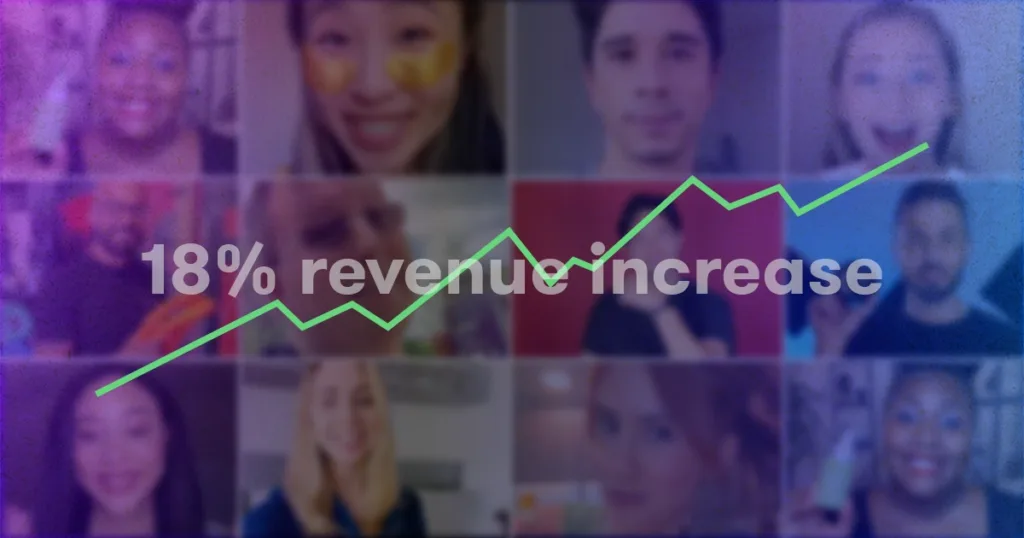
Additionally, UGC represents a highly cost-efficient approach to advertising. Whether sourced through on-demand platforms, directly commissioned from creators, or organically collected from users, UGC incurs a fraction of the costs associated with professional production efforts typical of traditional marketing materials.
This affordability makes UGC a perfect option for brands seeking to maximize their marketing spend. The combination of UGC’s lower cost and its proven ability to drive revenue offers a greater return on investment (ROI).
41. Millennials consume 18 hours of media each day, with nearly 30% of that going to UGC [38]
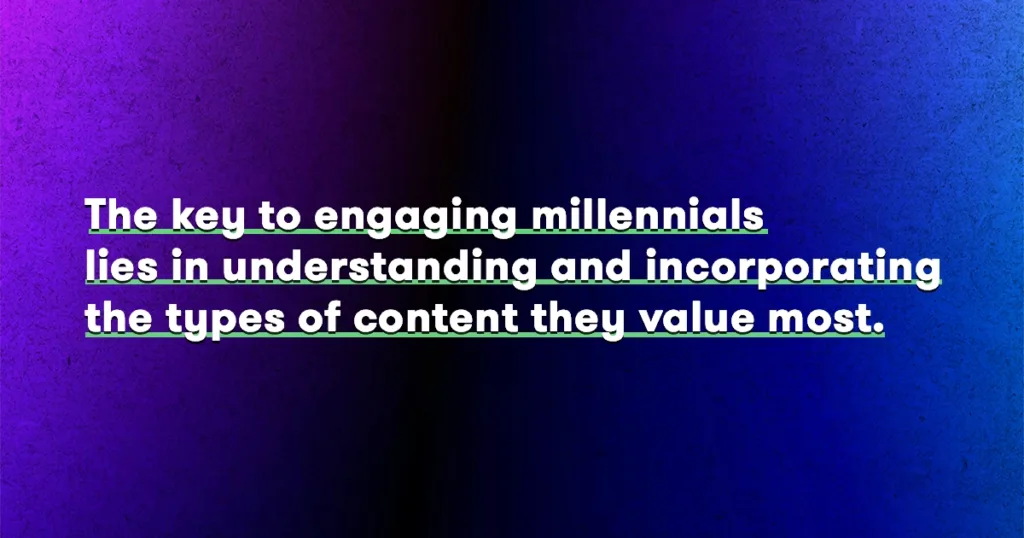
The prevalence of UGC in millennials’ media diet reveals their preference for content that feels genuine and trustworthy, qualities often missing from traditional advertising.
The key to engaging millennials—who are bombarded with an overwhelming amount of content daily—lies in understanding and incorporating the types of content they value most.
UGC represents a unique opportunity for brands to cut through the noise, offering a pathway to not just capture attention but to also build lasting relationships with one of the most influential consumer groups today.
42. 43% of marketers find sourcing engaging UGC challenging [39]
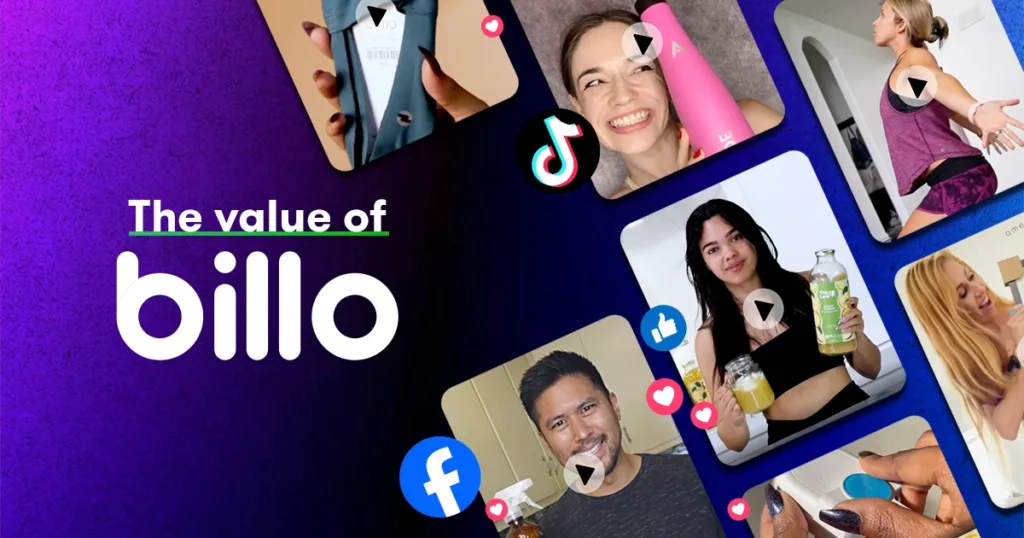
Despite its proven effectiveness in enhancing brand engagement and trust, nearly half of all marketers report difficulties in manually sourcing engaging UGC.
This challenge stems from the vast and unstructured nature of digital content across various platforms, making it a time-consuming task to identify and curate high-quality UGC that aligns with a brand’s marketing objectives.
This is where the value of UGC platforms like Billo becomes evident. Billo simplifies the process by providing a structured approach to ordering customized UGC on demand. This not only alleviates the burden of manual search and curation but also ensures that the content generated is tailored to meet specific marketing needs and brand guidelines.
Brands can also access a wide network of content creators with varying styles, backgrounds, and perspectives, enriching their marketing materials with a broader range of authentic voices and experiences.
Sources
- Forbes
- Cloudinary
- Turtl
- Hubspot
- Bazaar Voice
- Market Splash
- Absolute Digital
- Notso
- Webinarcare
- Nielsen
- Hubspot
- Branded Agency
- Granify
- Meetanshi
- Gitnux
- Dash
- Entribe
- Taggbox
- Shopney
- Artios
- Investors Observer
- Insider Intelligence
- Blavity Inc
- Markerly
- Mandala
- Linearity
- Tintup
- Storyly
- Shopify
- Reviews
- Adweek
- UGC 101
- Webinarcare
- Statusphere
- Volusion
- Embed Social
- Business2community
SEO Lead
Passionate content and search marketer aiming to bring great products front and center. When not hunched over my keyboard, you will find me in a city running a race, cycling or simply enjoying my life with a book in hand.

Authentic creator videos, powered by real performance data
22,000+ brands use Billo to turn UGC into high-ROAS video ads.
Common UGC Brief Mistakes Brands Still Make in...
A vague or overpacked brief derails campaigns before they start, [...]...
Read full articleOrganic UGC vs Paid UGC: How Top Brands Drive Gr...
More brands are turning to user-generated content (UGC) to fuel [...]...
Read full articleOrganic UGC: How to Turn Native Creator Posts in...
Short-form feeds spotlight content that feels natural, not like ads. [...]...
Read full article


